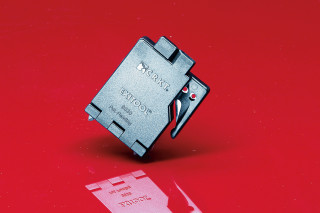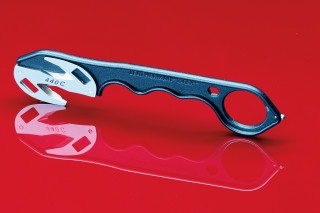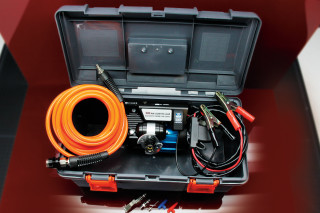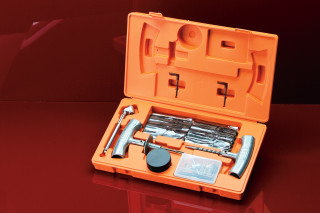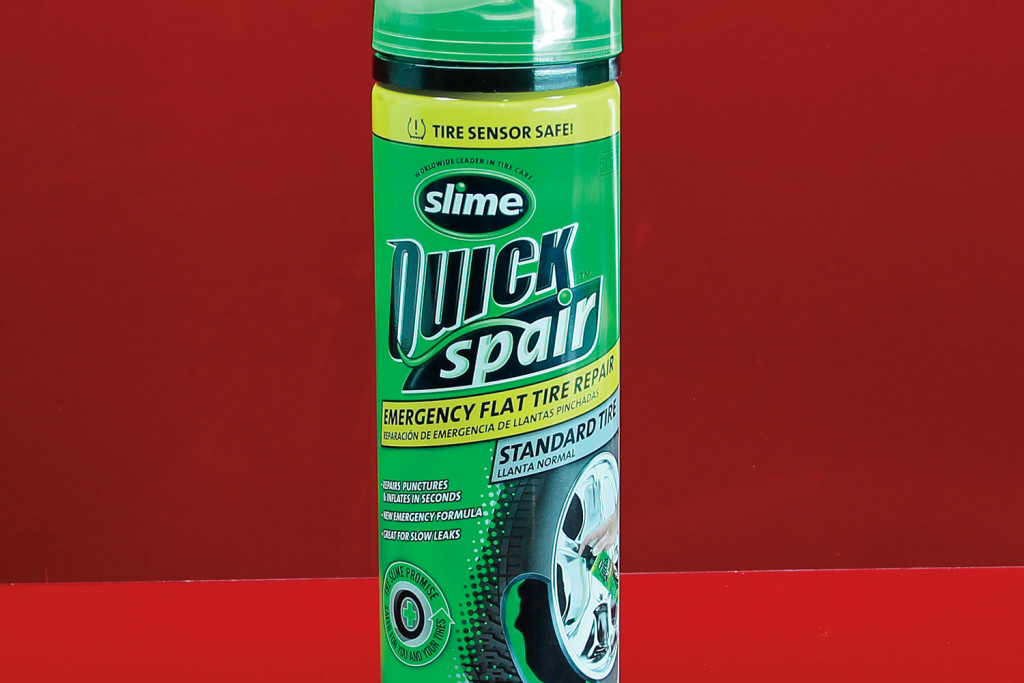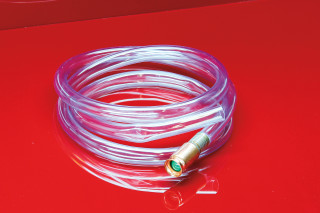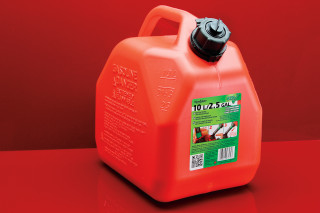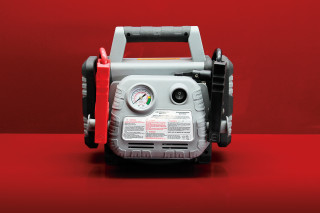In This Article
The monotonous rumbling of the snow coach was almost lulling your passengers to sleep after the busy day you'd all had. The machine chugged softly, almost like a slow train, until the sharp jolt hit and slid you and your passengers into the window. The mother in your tour group let out a shriek of surprise and covered her mouth with her hand quickly, embarrassed, as if this were part of the ride. Her family straightened themselves in their seats, wide-eyed. No sooner than everyone regained their seating and composure, another blow struck the snow machine, much stronger than the first. The impact was accompanied by a loud sound like thunder that wouldn't stop.
You halted the snow machine and quickly looked around through the large square windows. The sun was hanging low in the southwest, bathing the snow-covered terrain in a golden light. But to your dismay, an enormous dark-gray cloud began to boil up from the ground and block the light of sunset. As soon as the thundering sound started to subside, your senses were assaulted again by the shuddering of the earth, which shook the snow coach and nearby trees violently. The base of the grayish black ash cloud had widened and the speed it was growing had increased. Rocks began pelting the vehicle, some large, hurled into the sky by the force of the volcanic upheaval. The light had diminished to a surreal and sudden twilight.
You and your tour group sat in shock, looking at this hellish display of volcanic activity. The churning cloud of ash and gas grew in the southwest, in the direction you were headed to get back to the lodge.
In this diabolical installment of What If? we will see what happens to a small group when the earth cracks open and the bowels of the underworld spew forth. For three different views on surviving this catastrophic event, OG asked three survival experts to spin a tale of nature versus mankind. With us is Jim Cobb, who has published numerous prepper books and is a well- respected disaster-preparedness consultant. We also have Rudy Reyes, an actor, martial-arts instructor, and former special-operations member with the U.S. Marine Corp's 1st Reconnaissance Battalion. He knows “a little something” about thriving in the face of adversity. And finally there's me, Tim MacWelch, longtime survival instructor and author of several survival manuals.
Is there any way to survive when the very ground beneath you tries to take your life? Read on, and see for yourself.
The Scenario
Situation Type
Natural Disaster
Your Crew
You and a private tour group
Location
Yellowstone National Park, Wyoming
Season
Winter
Weather
Daytime: 20 degrees F; nighttime: -20? F
The Setup: You're a male guide for a snow coach tour company in your late 50s. You drive a snow coach, a touring van with tracks and skis instead of wheels and tires. Your vehicle has large glass windows for your customers to take photos of the winter wonderland that is the Yellowstone National Park. A family has booked a private full-day tour around Old Faithful and Geyser Basins. The father, Marcus, and the mother, Katerina, are in their early 40s. Their oldest boy, David, is 15, and the youngest, Eugene, is 13.
The Complication: Most of the tour has gone without a hitch despite the teens being slightly annoying. You're winding down the day and heading back to basecamp when multiple earthquakes rock your stagecoach. Then, moments later, the Yellowstone caldera blows, sending lava, rocks, and harmful ash everywhere!
Disaster-Prep Expert: Jim Cobb's Approach
We found out later that folks in the area had felt the ground trembling for at least a couple of hours before the first eruption. We hadn't felt a thing, due to the rumbling of our own in the snow coach.
When the volcano erupted, we suddenly had rocks and flaming globs of lava raining down around us. The snow coach slid and skidded from side to side. We finally came to a standstill with the back end resting against a pine tree. We were OK, but shaken up a bit. No one was injured, though, thankfully. I tried raising Doreen at home base, but there was no response, not even a crackle in the static. Of course, we all had cell phones, but service was spotty in this area on a good day…and this was far from a good day.
The light outside was already dimming due not only to the waning sunlight, but also the falling ash. The father, Marcus, began opening his door and I told him to stop — we didn't know what we were dealing with yet. Before he could slam the door closed, we all caught a whiff of something acrid and foul in the air.
The lava flow was moving downhill slowly, almost like syrup down a pile of pancakes…if the syrup was glowing red and igniting every tree and shrub it touched, that is. The flow was several hundred yards away, but it would get to us eventually. The steam rising from the melting snow wasn't helping our visibility issues, either. I knew we had to bolt. Immediately.
As I started to pull the snow coach forward, several large rocks tumbled down the hill. One of them hit the front skis, pushing us to the side a bit. I couldn't get the skis to straighten out. Before I could do it myself, Marcus jumped out of the snow coach and ran over to the skis. He'd pulled his scarf up over his face and was frantically kicking at the rock, trying to break it loose. Marcus began coughing and heaving as the rock finally rolled free. He tried walking back to his side of the snow coach and collapsed. I pulled my goggles down over my eyes, took a deep breath, and covered my mouth and nose with my scarf. Jumping outside, I managed to drag Marcus to his door. His son, David, helped me get him inside and the door closed again in just a few seconds. I managed to climb back into the driver's seat and close the door. As I sat down and sucked in air, mentally vowing to start a workout plan if I survived this.
His wife, Katerina, was sobbing and yelling while shaking Marcus. There was blood leaking out from his nose. His eyes were half open and vacant. Their other son, Eugene, tried pushing his mother aside, hollering something about CPR and Boy Scouts.
Eugene was still valiantly doing chest compressions in vain as I put the snow coach in gear. We'd moved no more than 50 feet when a boulder struck the passenger side of the snow coach, giving us whiplash. We lurched to a stop. Stuck. We needed to ditch the coach and go on foot — ash and bad air be damned. I grabbed the soft-sided cooler that held the remains of our packed lunches and bottled water and tossed in the small first-aid kit from where it hung on the dashboard. I pulled out the small toolkit from under my seat and the flares that were strapped to the inside of the door.
I turned in my seat and told everyone that we needed to get out of Dodge. We all came to the same conclusion at the same time: There was no way we could carry Marcus' body.
“Listen, I know this sucks, but there's nothing we can do about it right now,” I said. “He'd have wanted you all to survive, right? That's not going to happen if we stay here.” I told them to put on their ski goggles, pull up their scarves, and take shallow breaths. I handed David the toolkit, and we all piled out of the snow coach. I carried the cooler, Katerina the flares.
We walked sideways down the hill, moving across rather than straight down. The snow wasn't too deep here. I realized we were headed toward a small cavern I'd explored several months earlier. It wasn't much, but it would provide some degree of shelter and hopefully time to figure out our next move. Plus, the mouth of the cave faced away from the danger, which couldn't be a bad thing. I told everyone to grab some of the low-hanging dead branches from the trees we were passing, and I did the same.
We reached the cavern about 10 minutes later. I'd not been the first person to find it, of course, and previous visitors had left evidence of their visits behind. There was some graffiti on the walls and the usual assortment of old beer bottles, cigarette butts, and food wrappers on the floor. There were even the remnants of an old campfire near the cave opening. I pulled down my scarf and took some tentative breaths. The air seemed OK.
We were sweating due to our exertion, but I knew that wouldn't last. The temperature was going to fall overnight. Sweat plus cold equals hypothermia. The first order of business: light a fire, hence all the pine branches. I toyed with the idea of trying to get a branch lit with the lava, but figured that might just lead to bad things. I didn't want to waste one of the flares, either, if I could avoid it.
I asked the boys to start breaking the branches into smaller pieces as I searched the cave. I found a foil gum wrapper and asked Eugene if he still had his DSLR camera with him. He passed me his camera, and I popped out one AA battery from his high-powered flash. I took the gum wrapper and tore a bit off each side, so it was thin in the middle and wide at each end. Picking up a fast food bag, I twisted it up a bit and asked Eugene to hold it for me. I held the AA battery just under the fast food wrapper. Pinching one of the wide ends of the gum wrapper against the positive side of the battery, foil side touching the battery, I held the other end of the wrapper against the negative terminal. Almost immediately, the thinner middle of the wrapper started on fire. Eugene was quick to hold the paper bag close to that little flame and got the fire burning. We gently placed this under a pile of the thinnest branches and soon we had a nice little fire going.
Then both boys helped me roll a good-sized rock, maybe 3 feet across, between the fire and the cave opening. Taking an emergency blanket from the first-aid kit, I draped the blanket over the rock and secured it with a few smaller stones. The foil on the blanket reflected the fire's heat back at us, keeping us warm and allowing our clothes to dry.
I suggested we all try to eat a little something and drink some water, knowing we were all in need of hydration whether we'd admit it or not. We finished off what was left of the sandwiches and chips and drank a bottle of water each, leaving us with just two bottles to split between us later, should it come to that.
The fire was giving off some serious heat, so I showed them that by sitting or lying on the coats, we'd insulate ourselves a bit from the ground, keeping us warmer. We took turns adding wood to the fire as the night wore on, but I think we each managed to get at least a little sleep. Exhaustion will do that, I guess.
When morning arrived, I carefully bundled my mouth and nose, then walked outside to see what's what. As I went around the hill and looked in the direction of the snow coach, I could see it was still there, though charred and almost unrecognizable. The ash had continued to fall throughout the night, adding several inches of depth to the snow still on the ground. The ash was wet and sticky, adding considerable weight to my boots as I walked. The hike to base was going to be rough. It was only about 2 miles, but traveling through this muck the entire way was going to not only slow us down, but wear us out. While the company staff obviously knew we were out there, I had no way to know how, or even if, they'd be able to search for us.
I went back to the cave and broke the news. Katerina insisted she stop and say one last goodbye to Marcus. Making sure our campfire was completely out first, we slogged our way through the wet ash toward the snow coach. We couldn't get much closer than 75 feet or so as the ground was still too hot. They each bowed their heads, crying once again, as they said their final goodbyes. I did the same, praying for help from above to get this family to safety without any more casualties.
With sad hearts, we began to make our way toward base, hoping against hope that we'd find help there.
Ex-Military Commando: Rudy Reyes' Approach
The sun began its decent over the western ridge of Yellowstone National Park as my private tour was getting in their last pictures of Old Faithful when swarms of birds caught my attention. They too were heading west. I panned the vast terrain before me, the animals, from predators to prey were also moving west in unison.
I knew something wasn't right. I had that eerie feeling in the back of neck. It was time to leave.
I called to Marcus, his wife Katerina, and their two teenage sons, Eugene and David, “Folks, time to go!” Marcus acknowledged me with a wave and began to lackadaisically move toward me. I looked toward the snow coach in the parking area. Again I called, but this time I summoned the deepest voice I could muster, “We need to move! Now!” The startled family responded. Moments later they caught up to me, I had already begun walking to our vehicle.
“Hey, man, we still have some time here in our itinerary,” a winded Marcus said. “What's with the ‘tude?”
Without breaking stride, I said, “Sir, I'm trying to get your family back safely.” Suddenly, the ground jolted — wave after wave of quakes shook, sending our group to the snow-covered path. Once it subsided, I righted myself and quickly helped the group to their feet. The post-quake silence was shattered with a horrific boom!
The shockwave hit seconds later; the force sent the group flying backwards for 25 yards. I got to my knees facing east, in the direction of Thumb Lake nearly 20 miles away, when the twilight glowed and a mushroom cloud began to form. The stench of sulfur dioxide filled my nostrils. “Cover your faces with your scarves,” I screamed out as I cinched my scarf. I knew, given the topography of the park and where we were, the poison gas would be upon us soon. We needed to get to elevation.
The family was screaming in fear. I barked, “You need to focus. Listen to me now if you want to live. You hear me? Run!” They nodded in agreement as fire began raining from the sky.
Beyond the coach, the surrounding buildings were leveled, fires were igniting everywhere from the ejected lava-covered boulders. The air burned and our breathing was labored. As I jumped into the coach, I noticed Marcus was missing. “Close the door,” I said. “I'll get him.” I headed back through the ash whiteout. He was 100 yards away, on the ground coughing, and turning blue. He couldn't walk, so I grabbed him and carried him to the vehicle. The door swung open and the boys helped my put their father on the floor. “Give him mouth to mouth,” I said as I started and drove the coach as fast as it would go to higher ground. The coughing stopped, and I knew he had passed.
Shutting out the hysteria behind me, I needed to focus. With the volcano to my east, I knew the park's southern exit would be blocked; it runs along Thumb Lake. My only option was to get to Yellowstone West, 30 miles away. I also knew this must be a localized volcanic eruption — if it were the “super volcano” scientists feared, I'd already be dead.
The driving was tough, but I knew the road well. The glow of the fires, which were everywhere, also helped silhouette the terrain. The ashy sky was riddled with fireballs. As I turned to check on the family, still crying and huddling together, a large flaming boulder crashed broadside into the coach. The impact shattered the windows and split the vehicle almost in two. I stayed conscious, but the daze lasted for seconds. Instinctively, I reached for the fire extinguisher next to me and put out the flames. I then jumped, opened the side door, and ordered the boys to get out. Then I rushed to the other side to put out the rest of the flames. I used my iPhone flashlight to survey the damage…the coach was destroyed.
I walked back to the family to see the boys holding their unresponsive mother. She was bleeding heavily from severe head trauma. I pulled the father's lifeless body out, took off his heavy coat, and unzipped the lined hood. Handing David the hood, I said, “Keep this on her head and cover her with the jacket.” Then, I told them to take everything useful.
I grabbed the backpacks, med kit, and a small toolbox, and dumped them by the side door. David and Eugene were combing through the mess, while I jumped up front and went through the glovebox where I found three flares. Using the toolbox, I managed to dismantle the main 8-foot ski and dragged it to where David sat organizing the supplies while Eugene treated his mom.
“Good work, men,” I called out. “What do we have?” David looked up and said, “We have five packs, four bottles of water, two sandwiches, four Powerbars, I found your snow-shoes, five cellphones, and my dad's camera.” I pulled the flares out of my jacket and put them in my ruck.
Then I called the boys. We all took a knee, away from a distraught Katerina. “Men, we are in a world of shit, but we can make it through this if we work together,” I said. “We have about a 20-mile hike to Yellowstone West. We'll be safe there, but it's going to be tough. I know we will make it. Are you with me?” The boys sprung to the feet as I stood up, ready for the challenge.
I handed David my knife, telling him to cut out the seatbelts and bring them to me. I dragged the ski and the snow boots over to the mother. Eugene was back to holding some gauze he found in the med kit along with the hood on his mother's head. David returned with the belts, which I used to fasten the snow boots to the ski to creating a sled gurney. I jumped back into the coach and cut away seat covers.
We lined the gurney with the seat covers to create insulation for Katerina and then carefully placed her on it. I covered her in the emergency blanket from the med kit and then laid the heavy coat on top of her before I strapped her in. We then created two towlines from the remaining belts, each about 8 feet long, as well as a tailing line to slow the gurney on descents. With the remaining room on the gurney, we stowed two rucks and set off down U.S. Route 287 North.
We walked for hours in the frigged cold, but the boys kept up. The ash was getting thicker, but the toxic fumes dissipated in the higher elevation. Yet, the decent to the Firehole River area near the Grand Prismatic Spring brought back the higher levels of sulfur dioxide. Luckily the the strong westerly wind kept the gas from settling on the valley floor. “Keep your scarves tight over your faces and breathe slowly,” I instructed the boys.
The glow ahead of us was brighter than the surrounding fires in the hills. As we neared, the glow was not a fire, but a lava vent that was spewing from what was the Grand Prismatic, and the highway was blocked.
I reached into my pocket for my iPhone 6 Plus and was amazed to see I had a signal. I pulled up Google Maps. To the right of the spring area was higher ground, which would enable us to bypass the lava flow and return to highway on the other side. I tried to call the basecamp, but the signal faded. I told the boys to rest for two minutes, drink some water, and eat only half a Powerbar each — we'd need consistent nourishment and could eat the other halves in a couple of hours.
The hike around the lava flow was extreme, but the boys were fit. I took both towlines and tied them together, and then around my waist. After an hour climb, we made it to the top and away from the flow of the hill. The increased winds made the air clearer, enabling us to see the surrounding area and the route ahead looked clear of lava, though steep and dark. We used flares to navigate. A short time later we were back on the highway.
As dawn broke we tried to make calls, but the service was down. For breakfast, we shared one of the sandwiches and some water. Even in daylight, it was still hard to see much, but the temperature was rising.
By mid afternoon we had finally made it to the outskirts of Yellowstone West. The ash thinned, and in the distance I saw brake lights of what looked to be a convoy. The brake lights turned to driving lights. I yelled to Eugene, “Get the camera!” Seconds later and camera in my hand, I started running while setting off the flash as a fast as it would reboot. Soon, the brake lights reappeared and a Humvee stopped, turned, and was driving towards us.
As it pulled up, the driver, an Army reservist said, “Lucky, I saw that flash. We evacuated the entire town, and we're pulling out.” The door opened and we jumped in. “Thank you,” was all I could say. “Thank you.”
Survival Expert: Tim MacWelch's Approach
I was no stranger to tremors. Working in Yellowstone, one of the most seismically active places in the country, I thought that I'd seen and felt it all — until today. Had it been the super caldera explosion that many doomsayers had predicted, we would have been dead already. But I didn't count my good luck yet. Time was not on our side. We had to get out of there, and quickly.
The prevailing winds would be blowing the ash and fumes our way. But we couldn't take our intended route, and we couldn't go back to the lodge. The eruption looked like it was close to our destination, maybe even underneath it. I tried the two-way radio, but to no avail.
I began to run through my mental list of places where we could seek safety. My friend had a rental cabin northeast of our position, but that was the direction the wind was headed. Aside from the violence of an eruption and our proximity to the event, I knew the wind played a major role in a person's survival of volcanic events. The ash and gases blown in the wind would create other dangerous conditions. Then I remembered a vacation house that was due south of our position. I told my tour group to stay calm, that I knew a place where we'd all be safe. The mother, Katerina, and youngest boy, Eugene, were crying, and the oldest boy, David, looked like he would start at any moment. The father, Marcus, however, looked as if he were in complete shock.
I picked our path south through the fallen trees and the cracks in the ground. Visibility was becoming an issue, since the already low sun was blocked by ash and steam vents everywhere. Katerina and the boys tried calling 911, friends, and relatives. No could get through. Our path was growing more treacherous. Larger rocks were strewn about. They were still hot, melting the nearby snow. While taking the snow coach up a hillside, the vehicle began to skid, scooping up a rock into the tracks and lodging it there. I revved the engine and shifted gears, but we couldn't go forward or backward.
I muttered to myself, “We'll have to clear the tracks.” Marcus' voice cut the silence: “I'll do it.” Apparently, he was snapping out of his catatonic state.
I told him no, it was getting too dangerous — ash, fog, and toxic gases were everywhere. But Marcus already zipped up his coat to the top and stuck his nose down into the collar. “I'll be all right,” he told his family. Cracking open the door and squeezing through to keep the ashes out, Marcus climbed out and down to the ground. He found the wedge-shaped rock that had jammed the track, and began kicking it to dislodge the stone.
Suddenly, a tremor hit and threw the father to the ground. A fissure opened in the ground near Marcus and a grayish steam rose up, enveloping the man. He crawled backward quickly and tried to stand, but fell. This was bad, we all knew it. He crawled back to the vehicle's stuck track and began to tug on the stone. It finally fell free. Marcus crawled to the door and his family quickly pulled him inside. I hit the accelerator and began rolling us away from the toxic fumes.
When I felt we were clear of the gases, I stopped the vehicle to check on the patriarch. Marcus was still gasping. His skin burned from the steam, his eyes weak. He began to cough, a deep uncontrollable hacking, then he grasped again for a few moments. Then he didn't inhale. We all waited a moment, stunned. Then I pushed his family out of the way and started doing chest compressions, deep and hard. I felt some slight cracking under my hands — his ribs were breaking — but I pushed on.
Surprisingly, it was Katerina who stopped me. “We have to go now,” she said. “Or we all die.” A wave of guilt washed over me, as I nodded.
We drove on when we heard more booming in the distance and more stones clattering against the snow coach's windows. But then came a glow out of the darkness. Orange streaks shot out of the gloom. Great globs of glowing hot rock shot through the air, and small dark stones started breaking the glass and roof. Massive ones fell all around. Then the vehicle lurched, struck by a larger piece. The rear window began to crack from the heat. Flames began to rise from the back of the left track, ignited by the lava rock ball.
I grabbed the emergency bag, told everyone to grab their things, and pushed everyone out the door. Only Eugene refused to go. He clung fiercely to his father's body: “We can't leave him! We can't!”
“Take my bag to your mom,” I said. “I'll get your dad.” I dragged him clear, and joined by his family, and leaned up against a large pine. “We have to hurry to get to the house,” I said. “We'll come back for him later” I struck a flare to light the darkness and started leading the survivors in the direction of the house.
No doubt, we would have wandered in circles in the frigid darkness without the compass app in my smartphone. We only had three 30-minute flares, and I used two of them to light our way to higher ground. Ash fell around us and we did our best to keep our mouths and noses covered with clothing. After an hour's hike, and the consumption of two flares, we stopped to rest for a moment. We had only limited gear to begin with, and left some of that behind in the snow coach. We were carrying some basic tools and supplies, sack lunch leftovers, phones, and we had one flare left.
Then Eugene started shivering and crying. He was the worst dressed of the group, and the smallest. He had sweated and was now getting dangerously chilled. I thought about stuffing vegetation into his clothing for insulation, but had a better idea. I found a softball-sized rock which had obviously been hotter earlier — the snow melted near it. I removed my glove and held my hand near it. The warmth was undeniable, then I touched it. It was hot to the touch, but not dangerously so. I put my glove back on and picked up the rock. I asked the boy to unzip his coat. Through his tears, he looked at me as if I were crazy. “Trust me,” I said. I placed the hot stone against his sweater and helped him zip the coat back up. After I wrapped him in our only space blanket, he soon looked much better. Soon enough, we all had a hot stone under our coats.
Finally, we found the road. It looked like a war had passed through. The pavement was broken, cracked, strewn with rocks and boulders, impassable. I had hoped we could flag down a vehicle, but no one would be driving down this road tonight.
It was still many miles to the house — If it's still standing, I thought grimly. Katerina started crying, slumping to the ground. Her boys joined in. They were exhausted, terrified, and overwhelmed with grief. They needed rest, and they needed to release their grief. I stood vigil near them.
After half an hour, I noticed that the hot rock in my coat wasn't offering me heat anymore. I let it fall out of my coat and wondered if I could scale the operation up, significantly. I spotted three large volcano-spewed boulders with plenty of radiant heat. I called to the family, “Come over here, I found a place to get warm!” The hot boulders had warmed up the asphalt and ground beneath it. Soon we were sitting in a circle, huddling for warmth. Despite the frigid conditions, we dozed off and on for several hours.
I awoke freezing. Our boulders had finally lost their heat and were now barely warm to the touch. As the faint glow of dawn illuminated the distant east, we divided the little food that we had and ate it. Our remaining water was quickly downed as well.
Even though I wasn't feeling very optimistic, or rested, I suggested that it was time to pick our path toward the house. My thirst had grown after our dry breakfast. The ash would make any snow we could melt undrinkable. We plodded along carefully through the debris, and finally came to a road cut that was facing north. This spot had a large snowdrift that was covered with ash. A hot rock had plunged through it and melted a column of water that hadn't refrozen yet. The water was ice cold and tasted of dirt and rock, but was each took turns drinking several handfuls to moisten our mouths.
Again, our trek continued heading southeast down the broken road. I thought I could see a spire of wood smoke rising in the distance. I prayed that it meant the home was near and occupied. Perhaps the smoke was from a chimney or a wood stove. I pointed to the smoke. “I think that's it,” I told them, and the boys rushed past me to get a better look.
As they crested the last hill, they both stopped in their tracks. I trotted up to stand beside them with their mother close on my heels. The smoke was from the house, more correctly, the ruins of the house. The lawn was full of boulders and the home had burned to the ground. Only one small area was still smoking. This was what we had seen. The boys and the woman looked at me, and in turn I looked at each of them. I didn't know what to say. The next house I knew of was many miles away, and I didn't think we could make it in the condition we were in. We stood there silently for many minutes, and I finally started walking toward the burned rubble. I hoped I could find something that could be useful, something that had survived the fire. The mother and her sons just stood there on the shattered road.
Conclusion
Major natural disasters are just part of the deal when it comes to living on this planet. Certainly, long stretches of time can pass when nothing bad happens and human populations grow. During these peaceful quiet times, we tend to think we are in charge of everything and able to do as we like indefinitely. But there's always the potential of some calamity that will put us in our place.
As preppers and survivalists, we always want to believe that we could survive any scenario, but in all truth there are some situations that are simply “game over” events. A volcano in your proximity can be one of those events. Poisonous gases, pyroclastic flows, and flying blobs of lava aren't the things you can beat with some duct tape and a “can-do” attitude. But look on the bright side: We pretty much know where volcanic activity is likely to occur. If you're not willing to take the risk, perhaps you shouldn't tempt fate by visiting or living nearby.
How would you react to the same scenario as played out by our panel? Share your plan with us on our Facebook page: www.facebook.com/OFFGRIDmag.
Meet Our Panel
 Tim MacWelch
Tim MacWelch
Tim MacWelch has been a survival instructor for more than 20 years, training people from all walks of life, including members from all branches of the U.S. Armed Forces, the State Department, DOD, and DOJ personnel. He’s a frequent public speaker for preparedness groups and events. He’s also the author of three New York Times-bestselling survival books, and the new Ultimate Bushcraft Survival Manual. When he’s not teaching survival or writing about it, MacWelch lives a self-reliant lifestyle with his family in Virginia. Check out his wide range of hands-on training courses that are open to the public at www.advancedsurvivaltraining.com.
 Jim Cobb
Jim Cobb
Jim Cobb has studied, practiced, and taught survival strategies for about 30 years and resides in the upper Midwest. His books include Prepper’s Home Defense, Countdown to Preparedness, and Prepper’s Long-Term Survival Guide. Jim’s primary home online is www.survivalweekly.com. He is also active on Facebook at www.facebook.com/jimcobbsurvival. Jim ofers a consulting service as well as educational opportunities at www.disasterprepconsultants.com.
 Rudy Reyes
Rudy Reyes
Rudy Reyes is a former member of Force Reconnaissance, one of the U.S. Marine Corps' elite special-operations units. He ran combat missions in Afghanistan then, as part of the 1st Reconnaissance Battalion, helped lead the invasion of Iraq. This mission was documented in the book Generation Kill and the HBO adaptation of the same name, which he costarred in. Later, he served as a Defense Department contractor, trained African wildlife preserve rangers, and authored his book, Hero Living. For more information, go to www.rudyreyes.com.
More From Issue 11
Don’t miss essential survival insights—sign up for Recoil Offgrid's free newsletter today.
- Today's Active Volcanoes
- Reviewing The 3-In-1 Rechargeable Torch 250 From Goal Zer
- Making Your Own Jerky
- Boost Your Sprint Performance and Save Your Life
- Jerky Taste Test: Which Dried Meat is Prepper Approved?
- DIY Blade-Smithing
- Don't Be Afraid of Fear
- Using Filipino Self-Defense Tactics for When SHTF
- Backyard Survival Training
- A Buyer's Guide to Bug-Out Hammocks
- Build Your Own Survival Bow
- Can a Bug-Out Canoe Be a Viable Transportation Alternative?
- What If You Have to Deliver a Baby Without Medical Help?
- Bugging Out With A Baby
- What If? Yellowstone's Underground Super-Volcano Erupts?
Read articles from the next issue of Recoil Offgrid: Issue 12
Editor's Note: This article has been modified from its original print version for the web.


































































